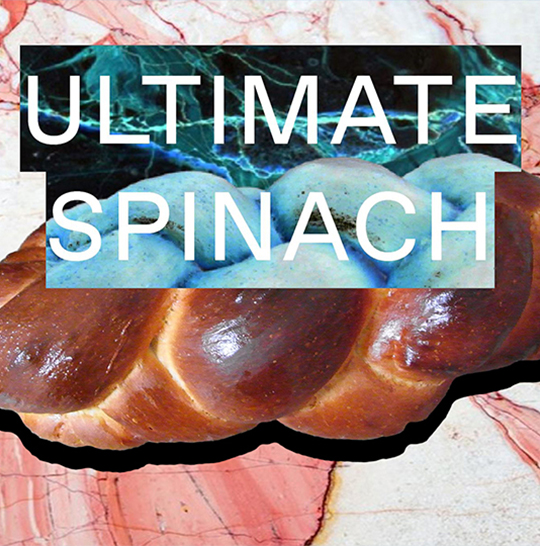Studio 44
Ultimate Spinach
Danielle Peck and Samuel Hunter

This studio is available to students enrolled in ABPL90142 Studio C, ABPL90143 Studio D, and ABPL90115 Studio E.
Studio Description
Ultimate Spinach attempts to make visible, through architectural discourse and design, a food system in an urban environment. ‘Food space’ is a broad term our studio uses to describe various stages of the food cycle; production to distribution, preparation to consumption and waste – it also describes physical and socio-political frameworks relating to food systems.
These systems are consistently and historically separated into rural and urban environments, and those of us that live in the latter, can never fully appreciate the inherent order that is embedded within the holistic food network and the impacts of this on the broader environment, locally and globally.
Food is the vehicle that we utilise to test our architecture; food as muse. We focus on food propagating cultural authenticity, plurality and diversity through the amalgamation of both existing and new found relationships between food, architecture and the city. ‘As the most ancient carrier of culture’ (Gohar, L.), food is contextual; it situates you in place and time. The studio exploits foods connection to place and uses this as a means to explore architectural authenticity and sustainability in the inner city of Melbourne, through the ultimate design of a hypothetical ‘Melbourne Food Institute’.
Studio Outcomes
Students will develop skills in research, critical positioning and return brief execution. Design is considered a method for developing these skills and short design esquisses will be used as a mode for research and discovery. Students can expect to be challenged with a complex array of both urban and socio-political contextual analysis, city-scale thinking and in juxtaposition, will learn how to scale these ideas into working architectural drawings.
Working in groups will be a component of the semester, demanding dialogue, understanding and negotiating different points of view to ultimately present a project that enables pluralism. Our studio seeks projects that are speculative, and we will help students develop a level of realism to produce final projects that sit somewhere between the real and imagined terrain.
Presentations and workshops with outside guests will compliment your regular design studio reviews. The studio takes a special interest in critical representation, and post-digital drawing techniques, there will be an extended drawing workshop that all students will attend to hone these skills.
Studio Leaders
Danielle Peck
Danielle is founding director of Architecture Associates, an emerging multi-disciplinary practice in Melbourne. Her experience includes a diverse range of project types including educational, cultural and residential work. She enjoys working across all scales and combines her passion for urban design with research projects in her current practice. Over the past 10 years, Danielle has led masters of architecture design studio's, and taught Australian architectural history at both RMIT University and The University of Melbourne.
Samuel Hunter
Sam is a principal of Lyons, a large architecture office in Melbourne that practices nationally. He has undertaken design leadership roles across a wide range of university and community projects. Most recently he has led Lyons’ design team for Melbourne University's New Student Precinct, and the new Springvale Community Centre and Library. Prior to that, he led the design work for the Sustainable Futures Building at the University of Queensland, as well as undertaking similar roles for Lyons’ two major projects at RMIT University – the New Academic Street project and the Swanston Academic Building. Sam has previously led the Lyons design studios at RMIT University, most recently teaching along-side Danielle at The University of Melbourne.
Readings & References
- Ahedo, J M 2015, 'Shipping and Handling', Log 34, pp 143 - 145.
- Barber, D 2014, 'Field Notes on The Future of Food', Log 34, pp 59 - 68.
- Birnbaum, D 2015, 'Rirkrit Tiravanija: Meaning Is Use', Log 34, pp 163 - 170.
- Congolese Plantation Workers Art League & Martens, R & Davies, A & Torolab, 2019, ‘Pork Trotters, Bay Leaves and Chocolate’, Frieze Magazine, No.205, Sept 2019, pp 124 – 162.
- Dali, S 1971, ‘Les Diners de Gala’, Taschen, Germany.
- Hayden, B 2014, 'The Power of Feasts', Cambridge University Press, Cambridge.
- Kennedy, R 2007, ‘When Meals Played the Muse’, The New York Times, February 21 2007.
- Lim, CJ 2014, 'All in Good Taste', Log 34, pp 45 - 48.
- Martin-McAuliffe S L 2016, Food and Architecture, Bloomsbury, London.
- Metcalfe, R S 2019, 'Food Routes: Growing Bananas in Iceland and Other Tales from the Logistics of Eating', The MIT Press, Cambridge, MA.
- Nan, L 2008, 'The Architectural Dinners of Salvador Dali', The Journal of the Ontario Association of Architects, Ontario.
- Pascoe, B 2014, ‘Dark Emu’, Magabala Books, Broome, Western Australia.
- Picon, A 2015, 'The Brain and The Belly: On the Destiny of Two Urban Metaphors', Log 34, pp 75 - 77.
- Ross, B 2008, 'Sustenance', Perspectives, pp 16 -18.
- TenHoor, M 2016 'Labour in the Logistical Drawing', Log 24, pp 139 - 142.
- Zola N & Gott B, 1992, ‘Koorie Plants Koorie People: Traditional Aboriginal Food, Fibre and Healing Plants of Victoria’, Koorie Heritage Trust, Melbourne, Australia.
Schedule Mondays 17:00-20:00, Fridays 13:00-16:00